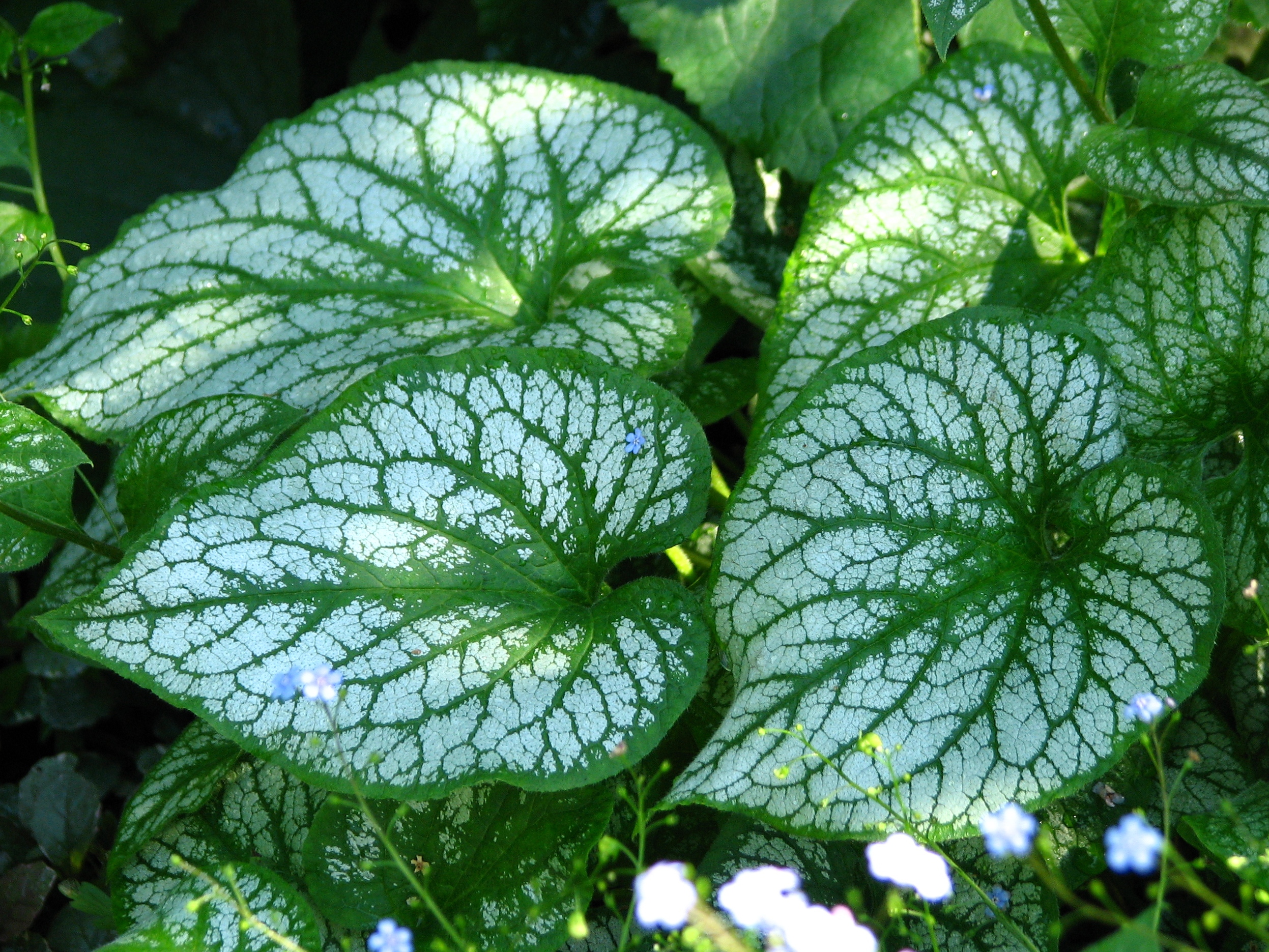Brunnera on:
[Wikipedia]
[Google]
[Amazon]
''Brunnera'' is a  It thrives in shade but also likes morning sunshine as long as it is in consistently moist, rich, organic soil. It does not tolerate dry conditions. It is often used in woodland gardens along streams of ponds and in naturalized areas as a specimen plant or clumped together as a border. Clumps slowly spread by creeping rhizomes to form thick ground covers.
It thrives in shade but also likes morning sunshine as long as it is in consistently moist, rich, organic soil. It does not tolerate dry conditions. It is often used in woodland gardens along streams of ponds and in naturalized areas as a specimen plant or clumped together as a border. Clumps slowly spread by creeping rhizomes to form thick ground covers.

 "Bugloss comes from Greek meaning ox tongue in probably reference to the roughness and shape of the leaves." It is a herbaceous perennial that grows in a Zone 3 to 8. In 2012 ''Brunnera macrophylla'' 'Jack Frost' was named perennial plant of the year by the Perennial Plant Association (PPA). Based on the (USDA) Hardiness zone it is hardy in zones 3 to 8.
"Bugloss comes from Greek meaning ox tongue in probably reference to the roughness and shape of the leaves." It is a herbaceous perennial that grows in a Zone 3 to 8. In 2012 ''Brunnera macrophylla'' 'Jack Frost' was named perennial plant of the year by the Perennial Plant Association (PPA). Based on the (USDA) Hardiness zone it is hardy in zones 3 to 8.
genus
Genus ( plural genera ) is a taxonomic rank used in the biological classification of living and fossil organisms as well as viruses. In the hierarchy of biological classification, genus comes above species and below family. In binomial nom ...
of flowering plants in the family Boraginaceae
Boraginaceae, the borage or forget-me-not family, includes about 2,000 species of shrubs, trees and herbs in 146, to 156 genera with a worldwide distribution.
The APG IV system from 2016 classifies the Boraginaceae as single family of the or ...
. They are rhizomatous
In botany and dendrology, a rhizome (; , ) is a modified subterranean plant stem that sends out roots and shoots from its nodes. Rhizomes are also called creeping rootstalks or just rootstalks. Rhizomes develop from axillary buds and grow ho ...
perennials
A perennial plant or simply perennial is a plant that lives more than two years. The term ('' per-'' + '' -ennial'', "through the years") is often used to differentiate a plant from shorter-lived annuals and biennials. The term is also widel ...
, native
Native may refer to:
People
* Jus soli, citizenship by right of birth
* Indigenous peoples, peoples with a set of specific rights based on their historical ties to a particular territory
** Native Americans (disambiguation)
In arts and entert ...
to the woodlands of Eastern Europe and North West Asia. They have hairy leaves and sprays of blue flowers in spring. Numerous cultivars are available, which are valued as groundcover in dappled shade. Some possess variegated
Variegation is the appearance of differently coloured zones in the leaves and sometimes the stems and fruit of plants. Species with variegated individuals are sometimes found in the understory of tropical rainforests, and this habitat is the s ...
foliage. The best known species
In biology, a species is the basic unit of classification and a taxonomic rank of an organism, as well as a unit of biodiversity. A species is often defined as the largest group of organisms in which any two individuals of the appropriate s ...
is '' Brunnera macrophylla'', known as Siberian bugloss.

 "Bugloss comes from Greek meaning ox tongue in probably reference to the roughness and shape of the leaves." It is a herbaceous perennial that grows in a Zone 3 to 8. In 2012 ''Brunnera macrophylla'' 'Jack Frost' was named perennial plant of the year by the Perennial Plant Association (PPA). Based on the (USDA) Hardiness zone it is hardy in zones 3 to 8.
"Bugloss comes from Greek meaning ox tongue in probably reference to the roughness and shape of the leaves." It is a herbaceous perennial that grows in a Zone 3 to 8. In 2012 ''Brunnera macrophylla'' 'Jack Frost' was named perennial plant of the year by the Perennial Plant Association (PPA). Based on the (USDA) Hardiness zone it is hardy in zones 3 to 8.
References
Boraginoideae Boraginaceae genera {{Asterid-stub